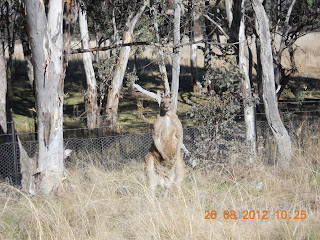To recap on, To Paint A Picture With Words so far, when writing a story,
your words take your readers on a journey into the world you have created. Not unlike a painter who engages the viewer
with the subject of the painting with colour, style and the medium in
which it’s painted. To engage our readers when writing, we use engaging characters, settings, plot, structure, theme, conflict, and the all important five senses (smell, taste, sound, touch, sight).
In Part 5 we’re going
to talk about Structure. So, what is structure? Put simply, structure helps to
organise and shape your story. And although there are probably many ways to accomplish this, the method I prefer is the three acts.
Act One
(the beginning)
Introduce your
characters, their relationships, and the settings.
Establish the conflict
- that is, the situation that drives the main character to act
Act Two (The
middle)
The story develops
Complications and
obstacles arise
The main character
tries and fails and tries again
Tension grows until it reaches a climax
Act Three (The end)
Resolution of the
climax
All loose ends are
resolved
When writing a full
length novel I find this method is helpful because it divides my story into
three sections. I know that in this
first act, I have to introduce all my characters. I may not have them all appear in a scene,
but they will be mentioned so that the reader knows they exist in my
story. I also try to have all my
characters introduced in the first 20-25 pages.
By the end of the first act the conflict should be established.
Act Two is by far the
longest because it encapsulates all the complications and obstacles that
the main character is confronted with in his or her quest. So, it’s important to keep tensions coming
and being resolved and in so doing, keeping your reader interested in the
story. Tension gradually rises toward the end of Act Two till you reach the climax.
Act Three, of course,
is similar in length to Act One because it resolves all issues and lets the
reader know what happens to all the characters.
What type of structure
method do you prefer?



